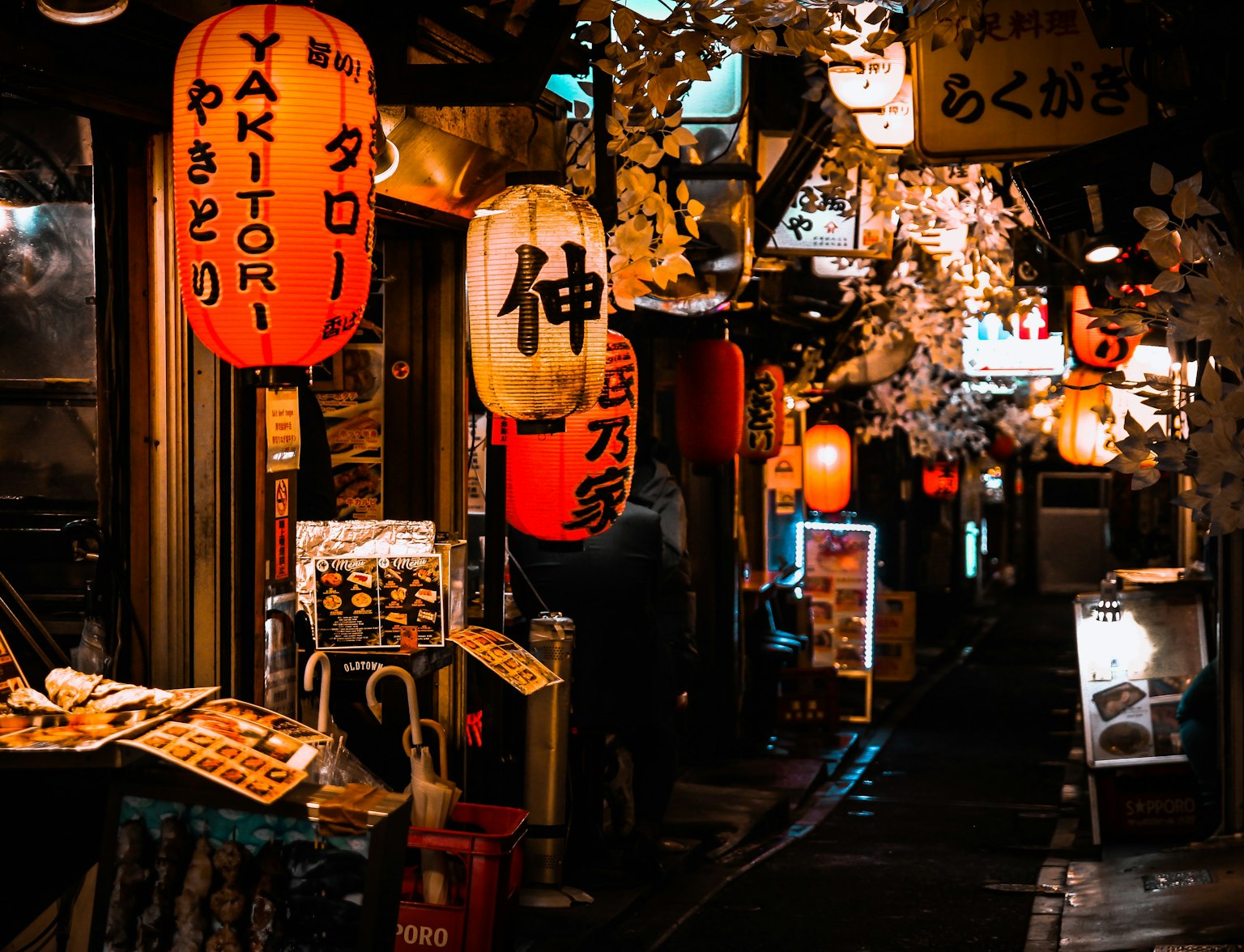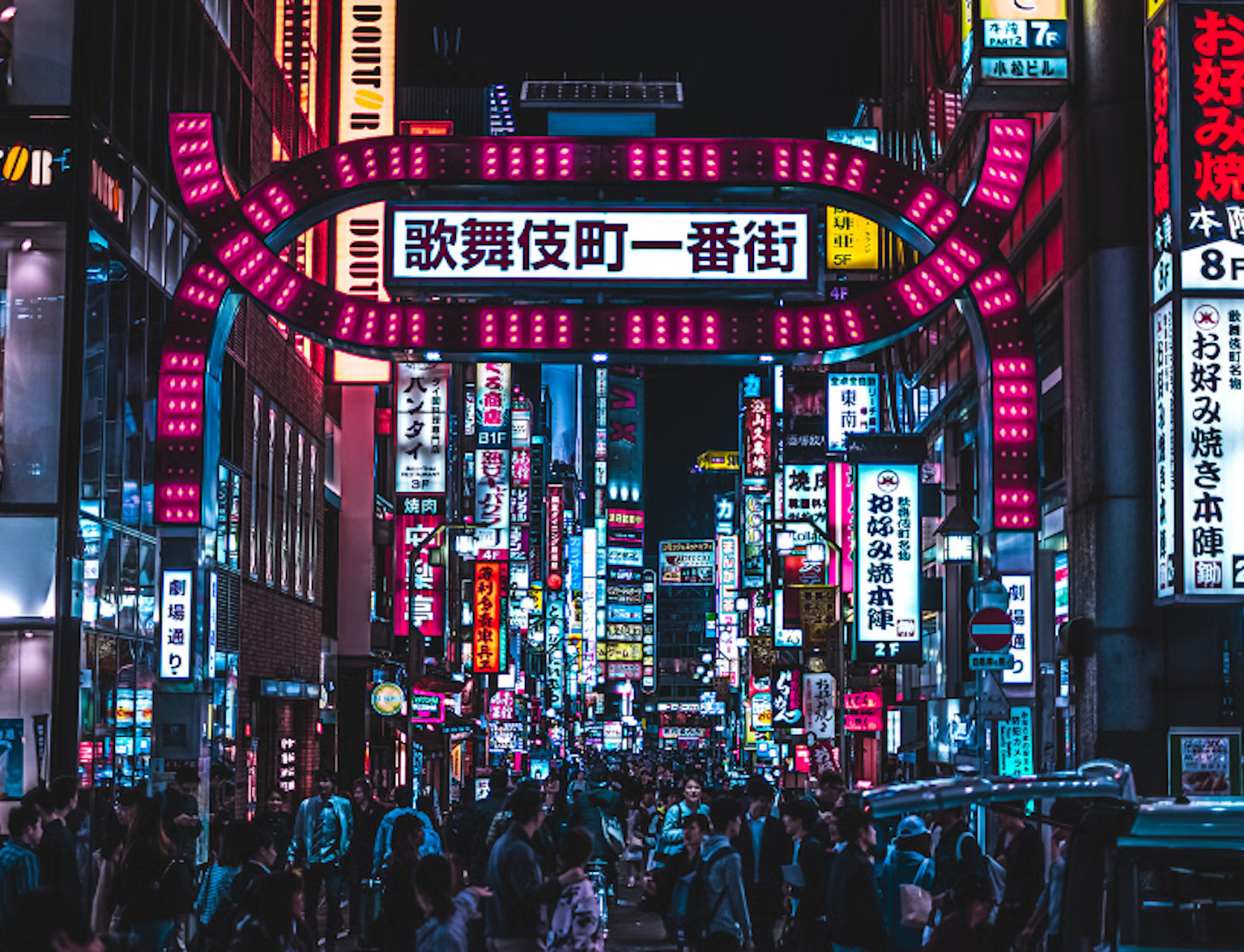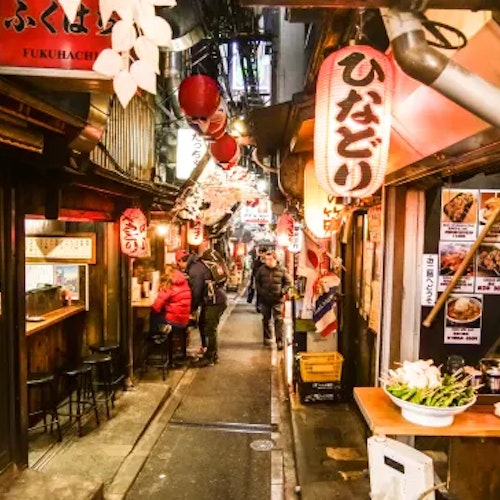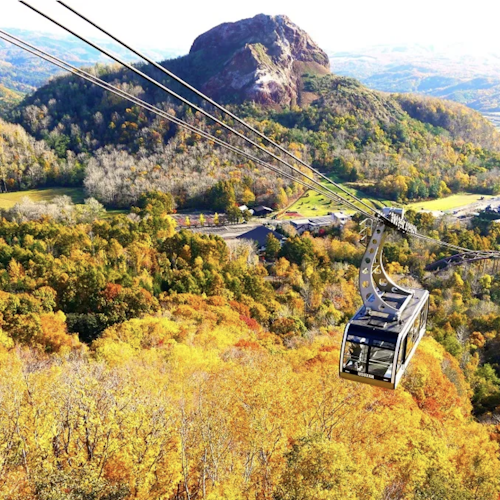

When planning your Tokyo nightlife adventure, two famous spots always come up in conversation. Both Omoide Yokocho and Golden Gai offer unique experiences that show you the real Tokyo after dark. But which one should you visit?
Let's break down everything you need to know about these two iconic locations.
Omoide Yokocho, which translates to "Memory Lane," is a narrow alleyway near Shinjuku Station's west exit. Locals sometimes call it "Piss Alley" because of its humble postwar origins, though the area has cleaned up significantly since then.
This atmospheric street dates back to the 1940s when black market vendors set up shop after World War II. Today, it houses around 60 tiny restaurants and bars squeezed into wooden buildings that somehow survived Tokyo's rapid modernization. The whole area has a wonderfully gritty, authentic feel that makes you forget you're in one of the world's most modern cities.
Walking through Omoide Yokocho feels like stepping into a different era. Smoke rises from yakitori grills, chefs call out greetings, and the narrow passages barely fit two people side by side. The smell of grilled chicken skewers fills the air, and red lanterns light up the evening crowds.

Golden Gai sits in Kabukicho, Shinjuku's entertainment district, just a short walk from Omoide Yokocho. This tiny network of six narrow alleys contains around 200 minuscule bars, most seating only five to ten people.
Golden Gai emerged in the 1960s and became famous as a hangout for writers, artists, musicians, and filmmakers. Each bar has its own unique theme and personality. You'll find bars dedicated to punk rock, jazz, photography, literature, and practically any niche interest you can imagine.
The area has a more bohemian, artistic atmosphere compared to Omoide Yokocho. While it's become touristy in recent years, many bars still maintain their quirky, exclusive character. Some bars charge cover fees ranging from 500 to 2,000 yen, especially for first-time visitors.

Budget matters when choosing between these Tokyo night spots. Omoide Yokocho generally costs less overall. A filling meal with drinks runs about 2,000 to 4,000 yen per person. You don't pay any cover charges, just order food and drinks.
Golden Gai tends to be pricier. Between cover charges and expensive drinks, you might spend 3,000 to 6,000 yen per bar. Bar hopping to multiple places adds up quickly. Some bars also add seating charges or require minimum orders.
For travelers on a budget, Omoide Yokocho offers better value. You get authentic food and atmosphere without breaking the bank. Golden Gai suits those who don't mind spending more for a unique bar experience.
Omoide Yokocho wins hands-down for food variety and quality. You'll find yakitori specialists, ramen shops, grilled fish restaurants, and izakaya serving various dishes. The yakitori here is legendary, with perfectly grilled chicken skewers seasoned with salt or tare sauce.
Many restaurants display plastic food models outside, making ordering easy even without Japanese language skills. Staff at most places are used to tourists and can help you navigate the menu.
Golden Gai focuses on drinks rather than food. Some bars serve light snacks like nuts, chips, or simple appetizers. A few bars offer basic dishes, but you shouldn't go to Golden Gai expecting a meal. If you're hungry, eat at Omoide Yokocho first, then head to Golden Gai for drinks.

Experience Tokyo's vibrant nightlife with our adults-only Shinjuku Golden Gai Food Tour. Sample diverse Japanese cuisine at four unique stops, including sushi, yakitori, and ramen.
Omoide Yokocho welcomes tourists more openly. Most restaurants expect foreign visitors and have picture menus or English-speaking staff. The atmosphere stays friendly and relaxed. You can walk around, peek inside different shops, and choose where to eat without pressure.
Golden Gai can be trickier for tourists. Some bars display "Japanese only" or "regulars only" signs. These places want to maintain their local atmosphere. However, many bars now welcome tourists, especially those with signs saying "foreigners welcome" or with English names.
In Golden Gai, it's polite to ask before entering a bar. Some places might be full, while others might not welcome walk-ins. Don't take rejection personally, just try another bar. Researching specific bars before visiting helps ensure a smooth experience.

Omoide Yokocho comes alive in the early evening, around 6 to 8 PM, when workers stop by for dinner. The restaurants typically close between 11 PM and midnight. If you want to avoid crowds, try visiting on weekday afternoons when some shops open as early as 3 or 4 PM.
Golden Gai is a late-night destination. Most bars open around 8 or 9 PM and stay open until 2 or 3 AM, sometimes later on weekends. The area gets busiest after 10 PM when people migrate from dinner spots. Early evening visits might find many bars still closed or very quiet.
Omoide Yokocho doesn't require much planning. Walk through the alley, look at what appeals to you, and sit down. Popular spots include Kabuto for yakitori, Masuya for offal, and Tsunahachi for tempura. But honestly, most places serve good food.
Golden Gai needs more research. Look up bars online before visiting. Some tourist-friendly options include Albatross, Bar Plastic Model, and Cambiare. These places welcome foreigners and have English-speaking staff. Reading recent reviews helps you find bars matching your interests.
Joining a Shinjuku food tour or Tokyo bar hopping tour takes the guesswork out of choosing. Local guides bring you to the best spots and handle all the interactions. You can relax and enjoy the experience without worrying about language barriers or cultural mistakes.

Embark on a mesmerizing Shinjuku nightlife tour, exploring iconic bars with an expert English-speaking guide.
Both Omoide Yokocho and Golden Gai sit in central Shinjuku, close to other attractions. During the day, explore Shinjuku Gyoen National Garden or the Tokyo Metropolitan Government Building's free observation deck. Shop at department stores or electronics shops around Shinjuku Station.
Many visitors combine these night spots with other evening activities. Watch the sunset from a rooftop bar, then head to Omoide Yokocho for dinner. After drinks at Golden Gai, catch a late movie at Kabukicho's cinemas or play video games at nearby arcades.
Evening walking tours of Shinjuku often include both locations plus Robot Restaurant, observation decks, and other nightlife spots. These comprehensive tours help you see multiple sides of Tokyo's most vibrant district in one night.



